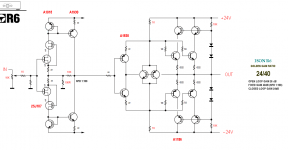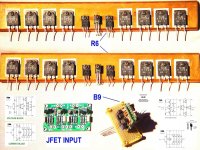His loudspeaker patent is worth a look too.a certain amount of comedy
Yeah, I don't see the point of all this. It might be fun to make up random stuff and write poetry about it, but you'd think the novelty would wear off after a few years."design salad"
We Aussies no longer even appreciate English nonsense verse. We will still be scratching heads whilst others are nodding amusement.
You could count the number of widely known poets here on one hand unless you consider bush poetry (rustic musings) in the mix.
Verse is err...not really a strong tradition but neither is lingering at websites with clip-art presentation and flaky ideas.
I should think they promptly get the goodbye 'click'
You could count the number of widely known poets here on one hand unless you consider bush poetry (rustic musings) in the mix.
Verse is err...not really a strong tradition but neither is lingering at websites with clip-art presentation and flaky ideas.
I should think they promptly get the goodbye 'click'
In Argentina we have an old popular saying: "No hacer leña de un árbol caído"= "Don't axe a fallen tree" , so I won't make fun or criticize Stee's ramblings , but want to say something about the supposed "patent" which for some might give his ideas a little credibility.
Mainly to be aware if somebody else misuses or misrepresents a "Patent Application".
Truth is,
It does not even have a patent number, but a date code.
And then, *what* is it?
Given the litigious identity of a Patent, the fact that it can take up to a couple years to be granted, and the importance of "who was first", means that the USPTO created a means to establish a date WITHOUT SAYING WHETHER THE IDEA WORKS OR NOT OR IF A PATENT WILL BE GRANTED SOME DAY.
From the mouth of the horse:
Provisional Application for Patent
where , among other things, it says:
1)
You don't have to prove or even explain how something is supposed to work.
2) A provisional application for patent (provisional application) has a pendency lasting 12 months from the date the provisional application is filed. The 12-month pendency period cannot be extended. Therefore, an applicant who files a provisional application must file a corresponding non-provisional application for patent (non-provisional application) during the 12-month pendency period
Meaning you have to file the "real" Patent within 12 Months.
Where is it?
3) here's the meat of the sandwich: the application is NOT checked whether it's nonsense or not (that will be done during the definitive patent processing):
So in a nutshell I can apply for a patent on how to cook hamburgers by soaking them in cat pee and I'll get a filing date code similar to USPTO Patent Application 20060093156 .
Mainly to be aware if somebody else misuses or misrepresents a "Patent Application".
Truth is,
is not an actual *Patent* , at all.USPTO Patent Application 20060093156
It does not even have a patent number, but a date code.
And then, *what* is it?
Given the litigious identity of a Patent, the fact that it can take up to a couple years to be granted, and the importance of "who was first", means that the USPTO created a means to establish a date WITHOUT SAYING WHETHER THE IDEA WORKS OR NOT OR IF A PATENT WILL BE GRANTED SOME DAY.
From the mouth of the horse:
Provisional Application for Patent
where , among other things, it says:
1)
Period. It's just a date, it neither verifies nor grants anything.A provisional application for patent is a U.S. national application for patent filed in the USPTO under 35 U.S.C. §111(b). It allows filing without a formal patent claim, oath or declaration, or any information disclosure (prior art) statement. It provides the means to establish an early effective filing date
You don't have to prove or even explain how something is supposed to work.
2) A provisional application for patent (provisional application) has a pendency lasting 12 months from the date the provisional application is filed. The 12-month pendency period cannot be extended. Therefore, an applicant who files a provisional application must file a corresponding non-provisional application for patent (non-provisional application) during the 12-month pendency period
Meaning you have to file the "real" Patent within 12 Months.
Where is it?
3) here's the meat of the sandwich: the application is NOT checked whether it's nonsense or not (that will be done during the definitive patent processing):
CAUTIONS
Provisional applications are not examined on their merits.
So in a nutshell I can apply for a patent on how to cook hamburgers by soaking them in cat pee and I'll get a filing date code similar to USPTO Patent Application 20060093156 .
In Argentina we have an old popular saying: "No hacer leña de un árbol caído"= "Don't axe a fallen tree" , so I won't make fun or criticize Stee's ramblings
Do you "pee on a fallen tree" instead?
Do you "pee on a fallen tree" instead?
No, poor Stee, he doesn't deserve that.
Plus I don't consider him a bad guy, he just thinks things in a different way.
And even more, no Argentine will never ever disrespect somebody whose surname is Caniggia:
Claudio Caniggia, probably the fastest footballer ever. - YouTube
Although he also played for Italy, Portugal and Scotland.
Oh well, nobody's perfect
Last edited:
a new facebook page
https://www.facebook.com/DiyAudioHiEnd
The forums are full of people ready to suppress ideas : P
https://www.facebook.com/DiyAudioHiEnd
The forums are full of people ready to suppress ideas : P
Attachments
This is a forum. There is no suppression here, just lots of incredulous people - some actually know far more about what you appear to be explaining than you or I. Engineers, scientists, manufacturers, designers and technicians - all will a have a better understanding of how feedback works and the significance or otherwise of loop ratios. In particular, they will know the problems of not enough feedback, as here.
I for one, will be glad of the time you download a simulation program and take a close look at what your proposals do to audio reproduction, harmonic distortion etc. You can learn so much about high quality amplification in a very short time. Then again, if it's a musical effect with gain you are aiming at, maybe a musical experimenter's forum is the place to be.
I for one, will be glad of the time you download a simulation program and take a close look at what your proposals do to audio reproduction, harmonic distortion etc. You can learn so much about high quality amplification in a very short time. Then again, if it's a musical effect with gain you are aiming at, maybe a musical experimenter's forum is the place to be.
Well, let me say, Mr. Stee's ideas "steenk" a bit. In the past I've met many people in this field, whose self confidence and ego far exceeded their actual knowledge and experience of the given subject. I worked for a well known audiophile manufacturer for 12 years, designing the most of their recent product line (speakers, amps), therefore having a little insight, I suspect there is a lot of unsubstantiated speculation in his ideas, specially when you see his ever-repeating footnote : "Please download my best audio idea....", that really blows the fuse for me. A little more modesty, and a lot more experience might definitely help here.
It's not about either of those things. It's symbolic art accompanied by poetry, created with schematic editor and typewriter. Stee is one of the finest composers and performers of this genre....high quality amplification...
...musical effect with gain...
So... Stee
Is there a chance then that you'd either
(a) have better diagrams for your ideas, with some sort of practical set of values for the components?
(b) have the same diagrams, but with component values actually specified - representing actual circuits built, tested, and determined to be wonderful
(c) would you like someone else to begin to work through your opus, and write it up, and see if there is actually merit in some of the ideas
???
Sorry, but we engineer-by-the-numbers types prefer this approach, rather than pictures of babes playing with tubes, and a grand plant that might be OK, but could be rubbish. I'm encouraging you to step out of your comfort-zone, and approach this by one of the above choices.
GoatGuy
Is there a chance then that you'd either
(a) have better diagrams for your ideas, with some sort of practical set of values for the components?
(b) have the same diagrams, but with component values actually specified - representing actual circuits built, tested, and determined to be wonderful
(c) would you like someone else to begin to work through your opus, and write it up, and see if there is actually merit in some of the ideas
???
Sorry, but we engineer-by-the-numbers types prefer this approach, rather than pictures of babes playing with tubes, and a grand plant that might be OK, but could be rubbish. I'm encouraging you to step out of your comfort-zone, and approach this by one of the above choices.
GoatGuy
Diamond Buffer Input CFB High Speed Power Amplifier Stereo | eBay
to test the reduction to the minimum of the correction requires a stable amplifier
This is to reduce the resistance that goes to ground
if you do not try how can I tell you about it?
to test the reduction to the minimum of the correction requires a stable amplifier
This is to reduce the resistance that goes to ground
if you do not try how can I tell you about it?
1)
You want to add some bulk to your thin post?
2)
Do you have a list of words, vaguely related to Audio, and you flip a coin to write them in a certain order, so to the unitiated (such as my Mom) they *sound* like Tech talk?
3)
See answer (2) above.
If it's you who wants to state something, it's you who proves it, not the other.
Now I understand .
By the way, I invited 3 young Engineers to have a look at your site.
Well, they were *impressed*, no doubt about that:

*Why* are you posting an EBay link of a product which is *not* designed or sold or built or tested by you?
You want to add some bulk to your thin post?
2)
What does it mean?to test the reduction to the minimum of the correction requires a stable amplifier
Do you have a list of words, vaguely related to Audio, and you flip a coin to write them in a certain order, so to the unitiated (such as my Mom) they *sound* like Tech talk?
3)
Nonsense. Random words.This is to reduce the resistance that goes to ground
See answer (2) above.
Nonsense.if you do not try how can I tell you about it?
If it's you who wants to state something, it's you who proves it, not the other.
Is *THAT* the best?Please download my best audio idea http://www.esafono.it/PULLEYAMP2.png
Now I understand .
By the way, I invited 3 young Engineers to have a look at your site.
Well, they were *impressed*, no doubt about that:
Last edited:
Because... let's be clear: the amplification required from line-level signals to output is on the order of 30x to 300x - whether for Class D, B, AB, A, tube, transistor or anything between. That 1 volt of input becomes 30 volts (P2P) becomes about 15 watts at the low end; at 300 volts, its 1,500 watts. Amplifiers, though rarely "remembered" to have been designed such, amplify voltage up front near the input, then current in later stages, to give power.
That really depends on the kind of speakers you are gonna use.
Most digital sources gives 2V out , not 1. With efficient speakers you need only about 10x gain.
Your approach is really interesting, but if signal purity is the main goal, what about a single gain stage and an output buffer, without global feedback?
This is my approach
I built an amplifier using all FETs (because I like 'em, being so similar to lower-voltage, heater less triode tubes), with voltage-amplification-per-stage of less than 2x ... yet it only takes 10 steps (2, 1.9, 1.8, 1.7... 1.2, 1.1) to give a voltage gain of 67; the final stage uses (like virtually all semiconductor setups) a complimentary emitter-follower configuration for current-gain, with matched FET-NPN Darlingtons, and very modest NFB. It was run class A throughout, though technically it has a push-pull final.
FETs are like pentodes not triodes. SITs are like triodes and are indeed the most linear transistors. The best vacuum tubes amps that I have listened to are push-pull of triodes, paralleled to get decent power, but 2 per channel would do.
Interesting, nonetheless. (And surely 1000000 times more than the OP ideas)
Well, they were *impressed*, no doubt about that:

those hairlines appear fake ...
- Status
- This old topic is closed. If you want to reopen this topic, contact a moderator using the "Report Post" button.
- Home
- Amplifiers
- Solid State
- the Golden Gain Ratio

